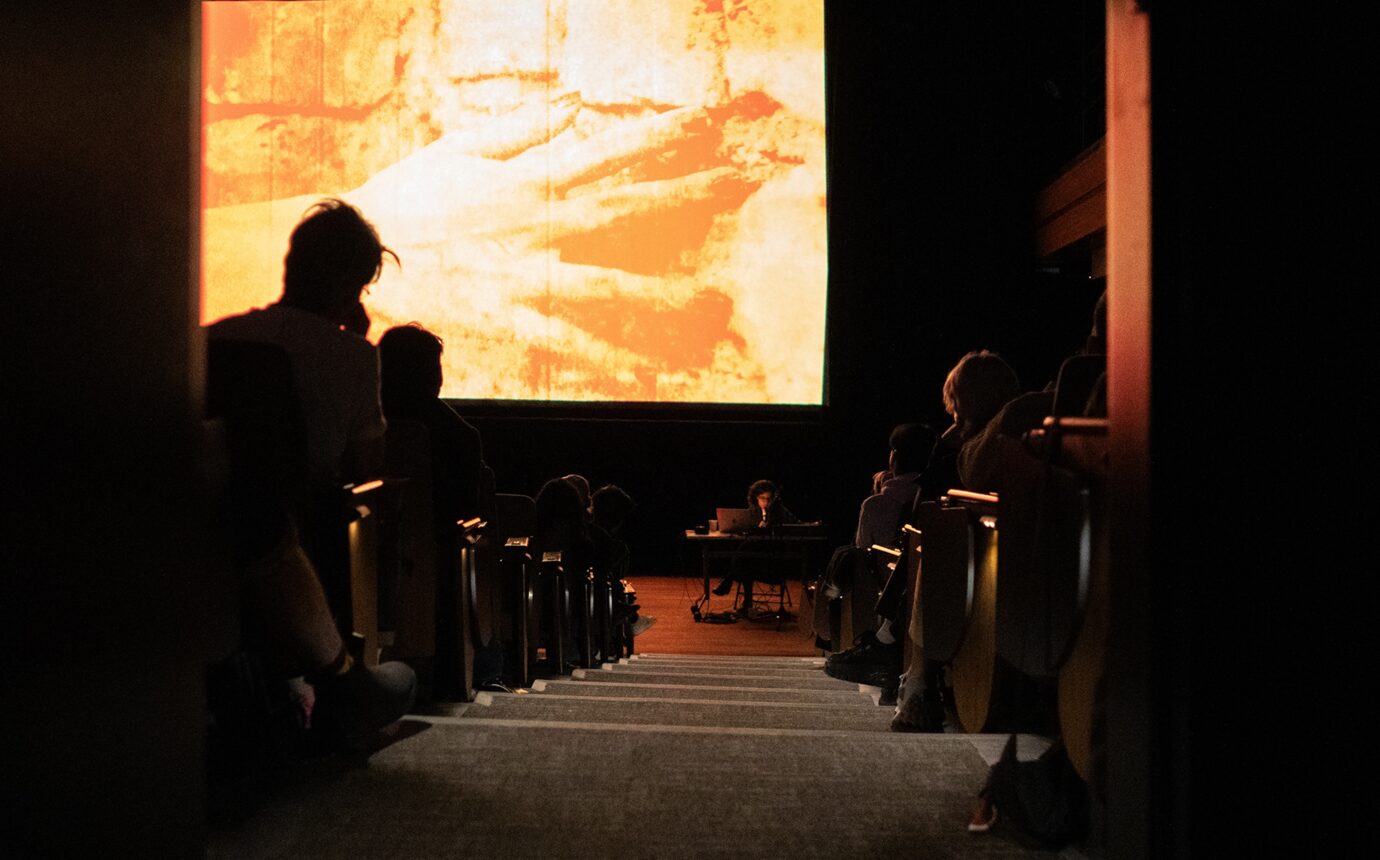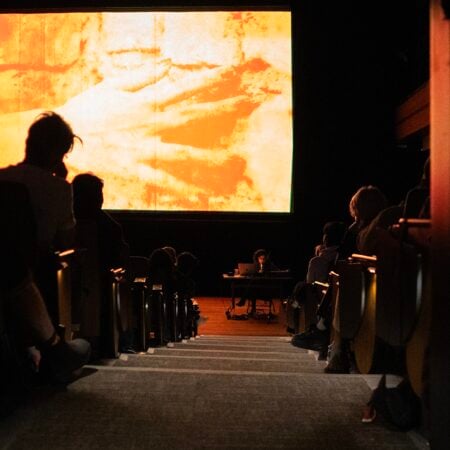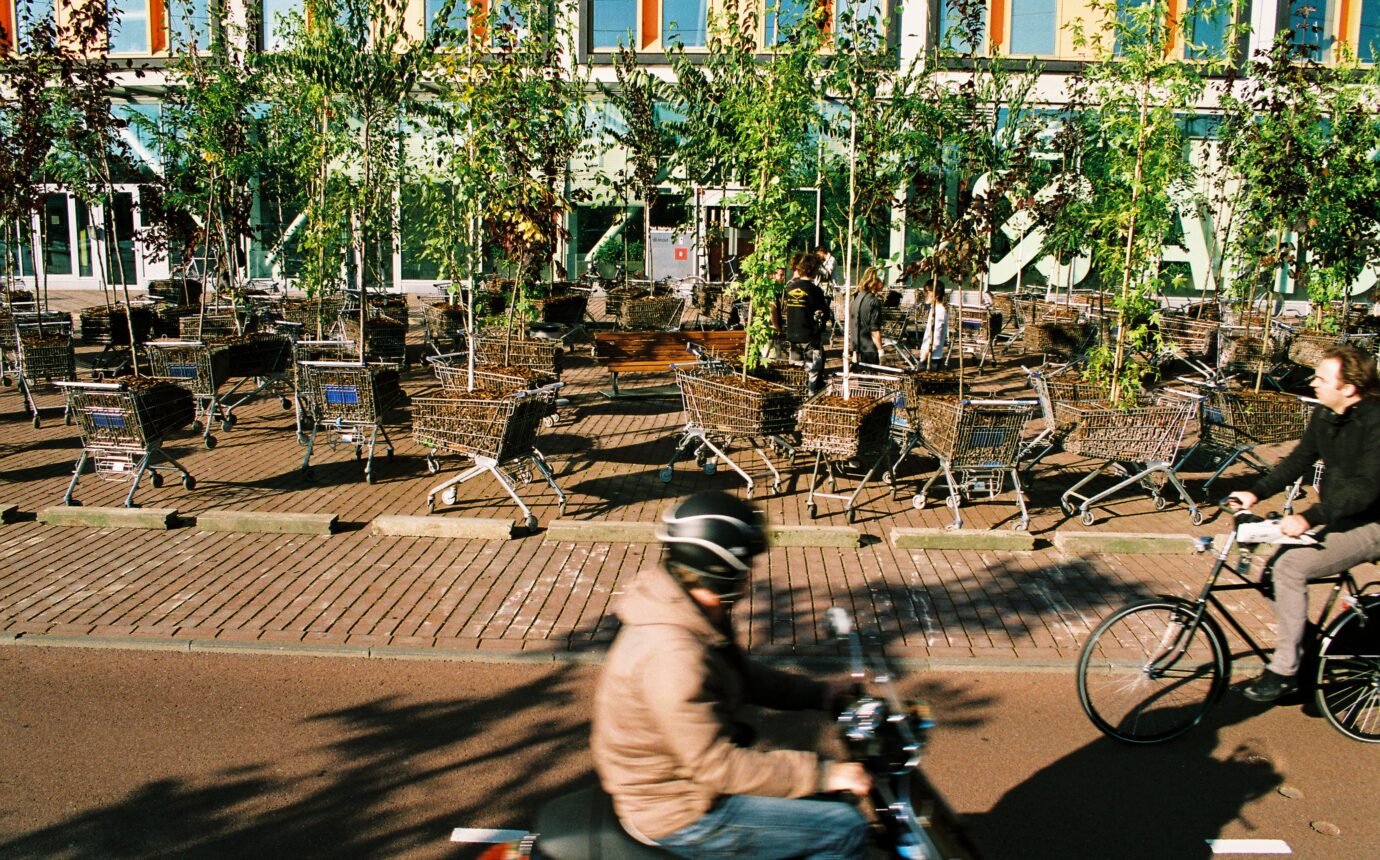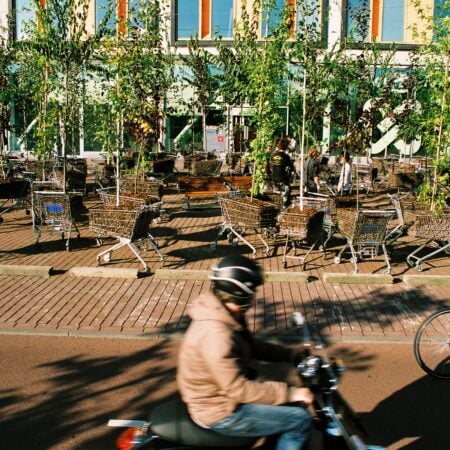What We Learned About Toronto at the 2025 Images Festival


A weekend of experimental cinema offered new ways of seeing the city—through politics, memory, architecture and community
My weekend at Images Festival begins at the grey banquettes in the lobby of Innis College, the University of Toronto building where Images has been hosting most of their screenings since 2017. I’m greeted by a colleague I didn’t expect to see, and another few friends whom I had texted earlier that week: “Meet me at Images.” Between freelance gigs and jobs in the arts, we are busy, so it’s a gift to steal a chat by the coffee machine in good company. We file into the theatre, where more hellos and hugs are exchanged across rows of seats before screenings begin.
A nimble festival dedicated to experimental film and media arts—this year’s Images, taking place between April 10th and 14th, feels like a renegade conference for the multi-disciplinary and picture-inclined. The project was originally conceived in response to a lack of venues for experimental and independent work in the ‘80s, eventually laying the groundwork for a thriving ecology of similar film festivals in Toronto. What started out in 1988 as a projection booth built at the Factory Theatre Lab on Bathurst Street, has since moved through various venues across the city including the Studio Theatre at Harbourfront Centre, the now-defunct Euclid Theatre, and Jackman Hall at the Art Gallery of Ontario. Over nearly four decades, the festival has transformed, adapted and expanded into media arts and installation-scale works, partnering with local galleries and artist-run centers that now include the likes of Gallery TPW, Mercer Union, VTape and Gallery 44. This constellation of spaces feels especially fitting when considering the Gloria Anzaldúa poem that inspired this year’s theme: We don’t want to be / Stars but parts / of constellations.
The festival’s 38th edition kicks off with a film by Dionne Brand, a local legend more renowned for her oeuvres in print than on screen. Originally released in 1993, Long Time Comin’ is, among other things, a film about friendship. The Toronto that Brand so often summons through her dreamlike poetry shimmers between the lines, as the film focuses primarily on the lives and work of Faith and Grace, two Black lesbian artists and activists. Faith Nolan’s voice—embodied in both song and earnest conversation—weaves together with the impasto of Grace Channer’s paintings; at times, the film zooms out wide enough to show the two friends’ easy rapport.
It’s Brand’s eye traversing the golds and umbers of Channer’s paintings, tracing the flow of flesh like bodies of sacred water on canvas. And it’s Brand bringing into focus communities and ways of being that had long been relegated to the margins. Revisiting the work over thirty years later, Long Time Comin’ shines a light on some hyperlocal issues that feel laughably the same (Faith and Grace muse about how inaccessible the Canadian grant system is), while footage of an upbeat feminist rally filling familiar Toronto streets is a reminder of all the work that’s gotten the city to where it is now. These days, it can feel like we’re moving backwards. I’m reminded of something Dionne Brand wrote in her acclaimed book Thirsty: “All her labour, all her time, all her heart could not make that painting work.”
Over the next few days I drift in and out of the theatre, between homelands familiar and foreign. Roving landscapes are laid against subtitles narrating a poem or a song. They speak across the screen, sometimes in dual languages, and sometimes without a sound accompanying them at all. These dauntless subtitles feel like familiar territory in the world of experimental film. Some works linger on sky or terrain to the point of being hypnotic.
“The film is a meditation,” says artist Charline Dally of her work, the short film Le disque de poussière (The Dust Disk). Le disque de poussière traces mineral inscription paths found in meteorite particles at a microscopic scale, moving from scientific imagery into symbology that reads diagrammatic, almost ancient. It is revealed that these inscriptions sometimes react to the microscopic gaze, even disappearing. I’m left with the question: when does observation veer into destruction?
On Sunday evening, I return to Innis Town Hall for the world premiere of Door Prize, the latest from filmmaker and York University professor John Greyson. The theatre buzzes with the warmth of friends and admiring colleagues, many of whom appear on screen. One of them, Alexandra Hickox, is a former master’s student of Greyson’s and a highly skilled American Sign Language (ASL) interpreter. Throughout the film, her character populates a TTC station’s digital video screens, telling the story of Door Prize through gamified clues, calls for tips and live updates. The overhead displays that we rarely notice here in Toronto (past the number of minutes until the next train) are reimagined as a hyper-immersive Crime Stoppers broadcast, with ASL bridging the gap left by the screens’ muted audio in style and whimsy.
Part murder mystery centred on a trans bike courier, part cosmic opera attuned to the double transit of Venus and Mars, the wildly maximalist Door Prize also has fun reenvisioning the city’s public commons. Near the film’s end, an animated rendering depicts an outrageously “greenwashed” TTC station, with train tracks converted into a massive underground bicycle lane. Accompanying advertising panels are replaced with memorial portraits of Mars Brito, the film’s central figure, played by Canadian filmmaker and writer Chase Joynt. During their post-screening conversation, Greyson remarks that his “very Toronto film had a very Toronto premiere at a very Toronto festival.”
Personally, I’ve used many topologies and metaphors to rationalize what Toronto is “like.” One of my favourites has been the centrifuge. The artist Ken Lum once said that Canada’s artistic centre is “neither a centre or a margin,” but a “centrifuge,” summoning an image of continuous movement—of immigration, diaspora, entries and exits. Toronto’s artistic identity closely parallels its cultural identity, and artists frequently bring stories, scenes and inspiration from their homelands into their work. But what we sometimes forget is that there has been a comparable volume of people leaving intermittently and producing a new kind of diaspora, moving through the world with a distinctly multicultural, almost porous sensibility. Like patterns mapped onto stars, the centrifuge relies on rotation to produce clarity. My mental picture of centrifugal force speaks of change and a certain freedom, the ability to move back and forth across boundaries imagined or real.
There is privilege attached to this movement—I remember, as I watch children in Yanhuiltán, Oaxaca speak about family members across the US-Mexico border as if they are distant ghosts. Curated by Heather Canlas Rigg and directed by Natalia Lasalle-Morillo, Passage of The Spiral paints a beautiful, fragile picture of a rural town in Mexico’s Mixteca region beset by an urban and northward exodus. Dialogues move lithely between fiction and reality as the Yanhuiltán children confide their secrets and dreams, thriving in the collaborative space of a local theatre workshop. A shorter film, Mona Benyamin’s Moonscapes, shows the absurdity of these uneven relationships through an extended email exchange with the Lunar Embassy (a real company purporting to be the “only legitimate seller” of Property on the Moon.) “My starting point was the realization that it is more possible for a Palestinian refugee to own land on the Moon than to return to their homeland,” Mona writes in an email stretching across the screen.
Is the centrifugal travel path, then, something I’ve taken for granted? What do we assign as our meeting place when those spaces are shifting with us? Stringent border enforcement at the US-Canada border makes the threat to these privileges more tangible than ever. These recent developments also underscore just how important it is to uphold the solidarity actions that Images places at the center of its mandate. “Experimentation and politics go together,” b.h. Yael—an acclaimed filmmaker and board member during Images’ first years of existence—points out. “Experimentation that doesn’t comply with formulaic structures—that is inherently political.”
Beyond espousing a freedom of form and experimental content, Images Festival leaves an impression through the honesty of its inquiries and the community-building work between numerous partners taking place behind the scenes. Despite the impressive range of continents, I’ve travelled to on-screen over the last weekend, I feel inspired to look inwards, towards the landscapes of my friendships and of my immediate surroundings. There is work to do purely in the act of reexamination.


























